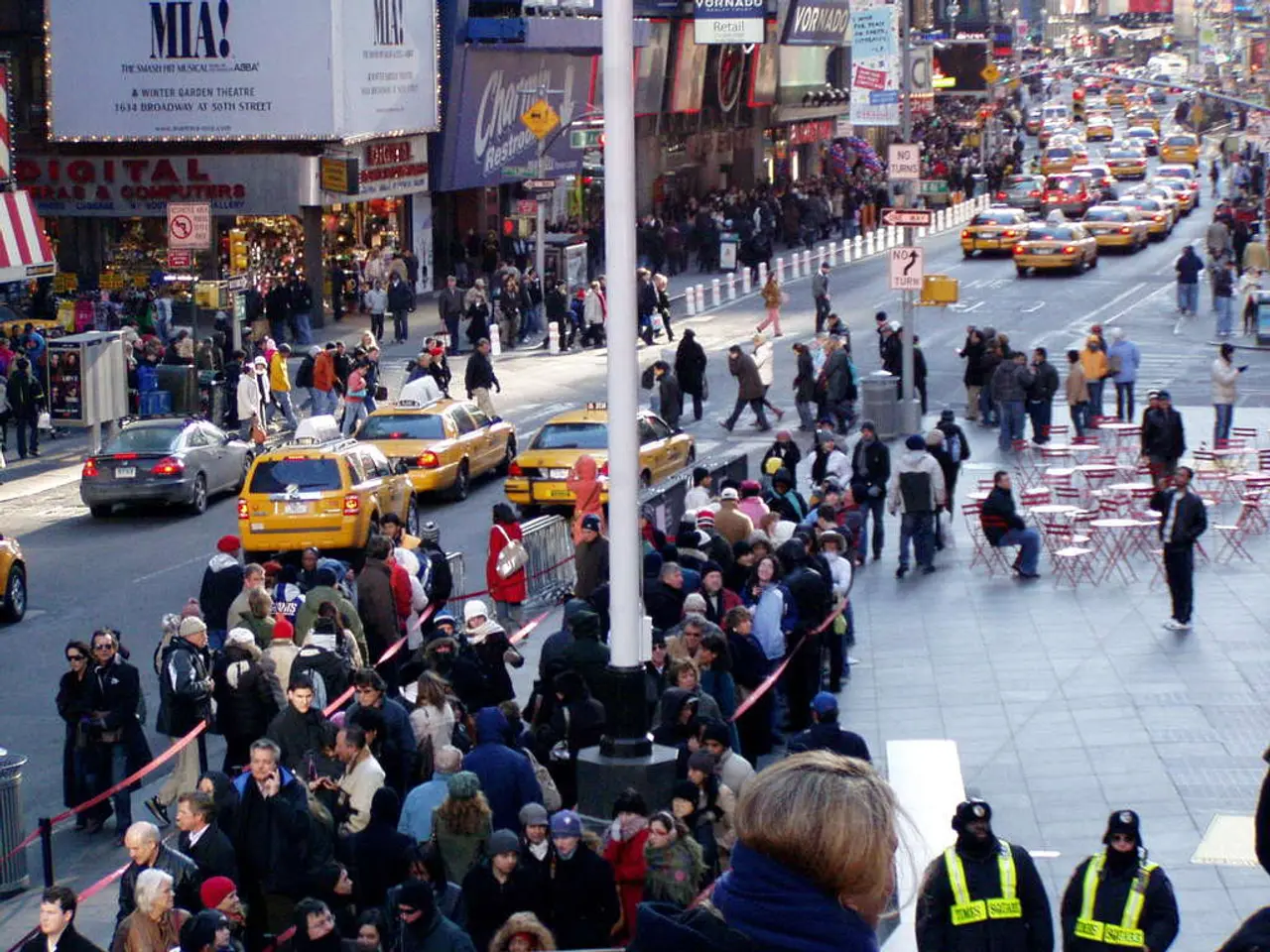Exploring Street Scenes Akin to Tokyo's Pedestrian Dominions
Tokyo's Pedestrian Paradise: A Model for Livable Cities
Tokyo, the world's largest metropolitan area by population, has transformed its urban spaces into pedestrian-friendly havens after two major catastrophes – the Great Kanto earthquake in 1923 and the fire bombings of World War II in 1945. Today, the city is renowned for its pedestrian paradises, most notably Shibuya Crossing and districts like Shibuya and Harajuku, which have redefined urban living by prioritizing pedestrian movement and fostering lively public realms [1][2][3][4].
One of the key contributions of these pedestrian paradises is efficient pedestrian flow. Shibuya Crossing, a famous "scramble crossing," exemplifies a design where all vehicular traffic stops simultaneously, allowing thousands of pedestrians to cross from all directions in a highly coordinated manner. This design reduces conflicts between cars and pedestrians, increases safety, and encourages walking as a comfortable mode of transport [1][2].
Another significant aspect is the creation of vibrant street life. Areas like Harajuku’s Takeshita Street and central Shibuya feature concentrated retail, dining, and entertainment options within walking distance, creating dense, attractive urban environments that reward pedestrian exploration and engagement [3][4][5].
These pedestrian zones are often integrated with transit, making it easy to walk first or last mile segments of journeys, thus enhancing overall livability and reducing dependency on cars [1][4]. Additionally, they provide public spaces and cultural attractions, such as Meiji Shrine’s peaceful grounds near urban hustle, blending urban vitality with natural and spiritual respite [3][4].
The success of Tokyo’s pedestrian paradises has not gone unnoticed. The scramble crossing concept and pedestrian-first planning have been adopted in many global cities seeking to improve walkability, reduce traffic conflicts, and enhance urban experiences [1]. Other megacities could emulate Tokyo’s pedestrian paradises if they prioritize pedestrian safety and convenience through zoning, traffic regulation changes, public space enhancements, and integration with transit. However, replication requires adapting to local conditions such as traffic patterns, cultural behaviors, urban density, and transit infrastructure [2].
The Pedestrian Paradise event in Tokyo, known as "Hokōsha Tengoku," attracts a significantly larger crowd on the first day compared to a usual Sunday, with 785,000 people in 1970. Making the Pedestrian Paradise a weekly occurrence can help people realize the potential of their city and drive further change [6]. Street performances, such as cosplayers and music performances, are common in certain areas during the Pedestrian Paradise event, adding to the vibrant atmosphere [7].
Car-free streets were first implemented in Tokyo's districts such as Ginza, Shinjuku, Ikebukuro, and Asakusa. The concept was also adopted in other cities in Japan during the 70s. Tokyo invested in first-class public transport infrastructure and created pedestrian zones due to concerns about pedestrian safety and environmental issues. Initially, car-free streets were implemented as "play roads" for kids on a large scale in Tokyo's busiest districts in the 70s [8].
The Tokyo Metropolitan Police sees developing nearby commercial areas, lessening air and noise pollution, and changing road traffic from car-first to pedestrian-first as goals of pedestrian zones. The term "Pedestrian Paradise" aims to elevate the pedestrian experience and potentially make motorists jealous [9]. However, the Pedestrian Paradise has been both praised and criticized, with complaints about noise and traffic congestion in some areas [10].
In summary, Tokyo’s pedestrian paradises have played a vital role in making the city more walkable and livable by enabling safe, efficient pedestrian flows and creating lively, attractive urban environments. While the core principles are replicable, success in other megacities depends on tailoring interventions to local urban and cultural contexts [1][2][3][4].
[1] https://www.citylab.com/transportation/2018/05/shibuya-crossing-tokyo-pedestrian-paradise/560738/ [2] https://www.japantimes.co.jp/news/2019/04/28/national/tokyo-pedestrian-paradise-weekly-event-benefits-businesses-city-residents/ [3] https://www.japantimes.co.jp/culture/2019/10/21/travel/harajuku-takeshita-street-tokyo-pedestrian-paradise/ [4] https://www.citylab.com/transportation/2018/05/tokyos-pedestrian-paradise-is-a-model-for-cities-everywhere/560900/ [5] https://www.timeout.com/tokyo/features/shibuya-10-best-things-to-do-in-shibuya [6] https://www.japantimes.co.jp/news/2019/04/28/national/tokyo-pedestrian-paradise-weekly-event-benefits-businesses-city-residents/ [7] https://www.japantimes.co.jp/culture/2019/10/21/travel/harajuku-takeshita-street-tokyo-pedestrian-paradise/ [8] https://www.citylab.com/transportation/2018/05/tokyos-pedestrian-paradise-is-a-model-for-cities-everywhere/560900/ [9] https://www.citylab.com/transportation/2018/05/tokyos-pedestrian-paradise-is-a-model-for-cities-everywhere/560900/ [10] https://www.citylab.com/transportation/2018/05/tokyos-pedestrian-paradise-is-a-model-for-cities-everywhere/560900/
- In promoting sustainable living, Tokyo's pedestrian paradises showcase the integration of environmental-science principles, as they prioritize walking over cars, thereby reducing air and noise pollution.
- The impact of Tokyo's pedestrian paradises extends beyond urban planning, with the vibrant street life fostering a unique lifestyle blend of fashion-and-beauty, food-and-drink, and home-and-garden experiences for residents and visitors alike.
- The success of Tokyo's pedestrian paradises serves as a testament to the potential of car-free environments, and stark contrast to the reliance on personal vehicles in a growing number of cities around the world, particularly in the realm of travel.
- Looking towards the future, adopting the pedestrian-first approach in megacities could bridge the gap between climate-change concerns and daily lifestyles, paving the way for more sustainable living choices in various sectors such as fashion-and-beauty, food-and-drink, and home-and-garden industries.
- Encouraging sustainable living through pedestrian paradises has gained momentum across other cities in Japan, who have recognized the benefits of transforming car-centric urban spaces into pedestrian-friendly environments, while also prioritizing the needs of the environment and the public.




